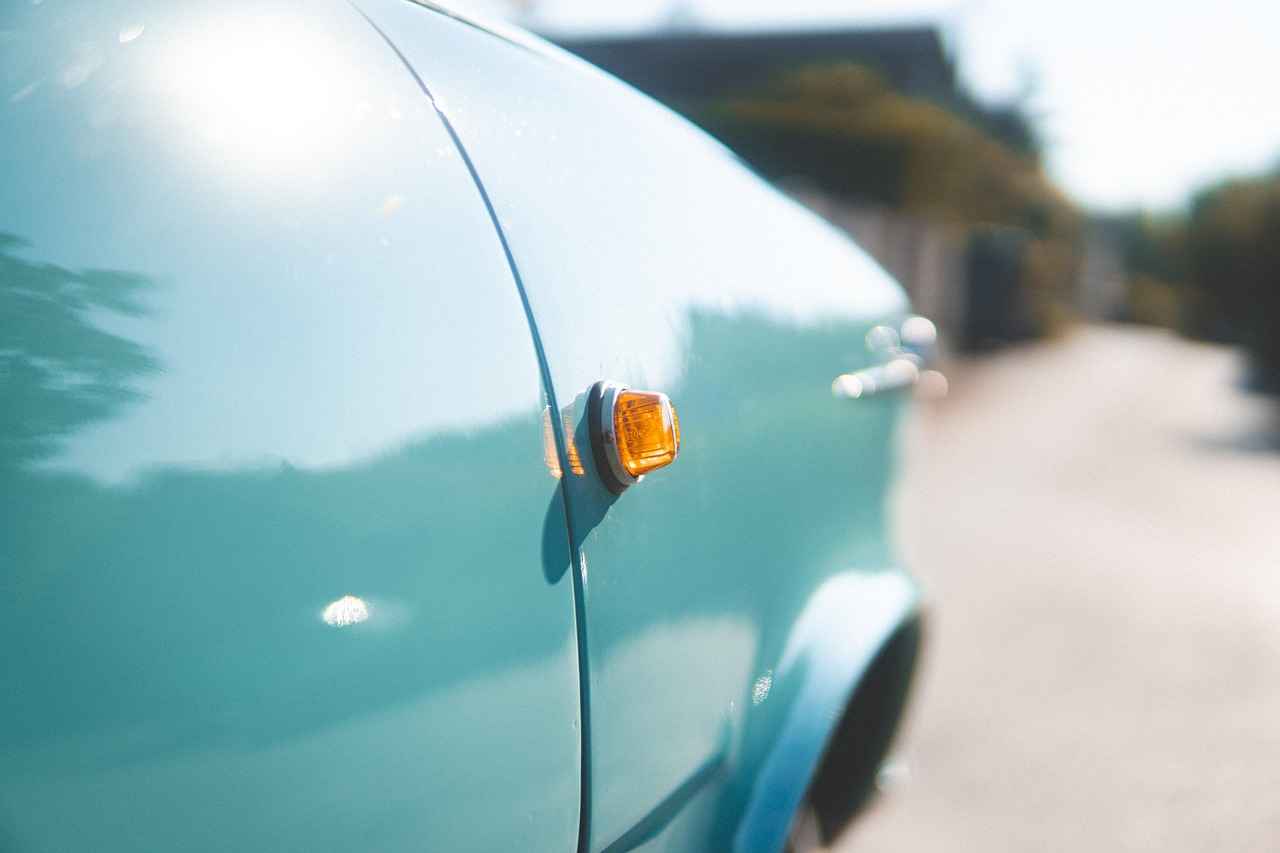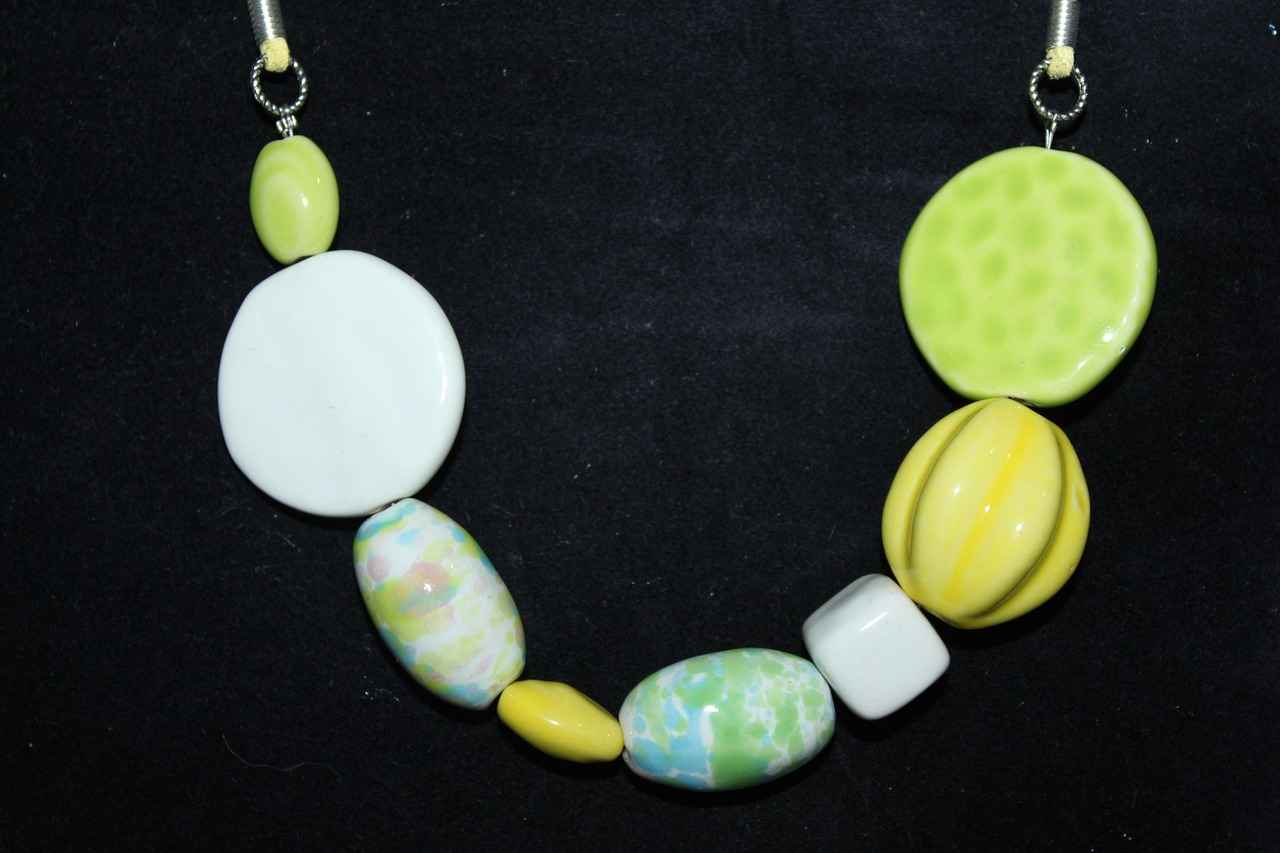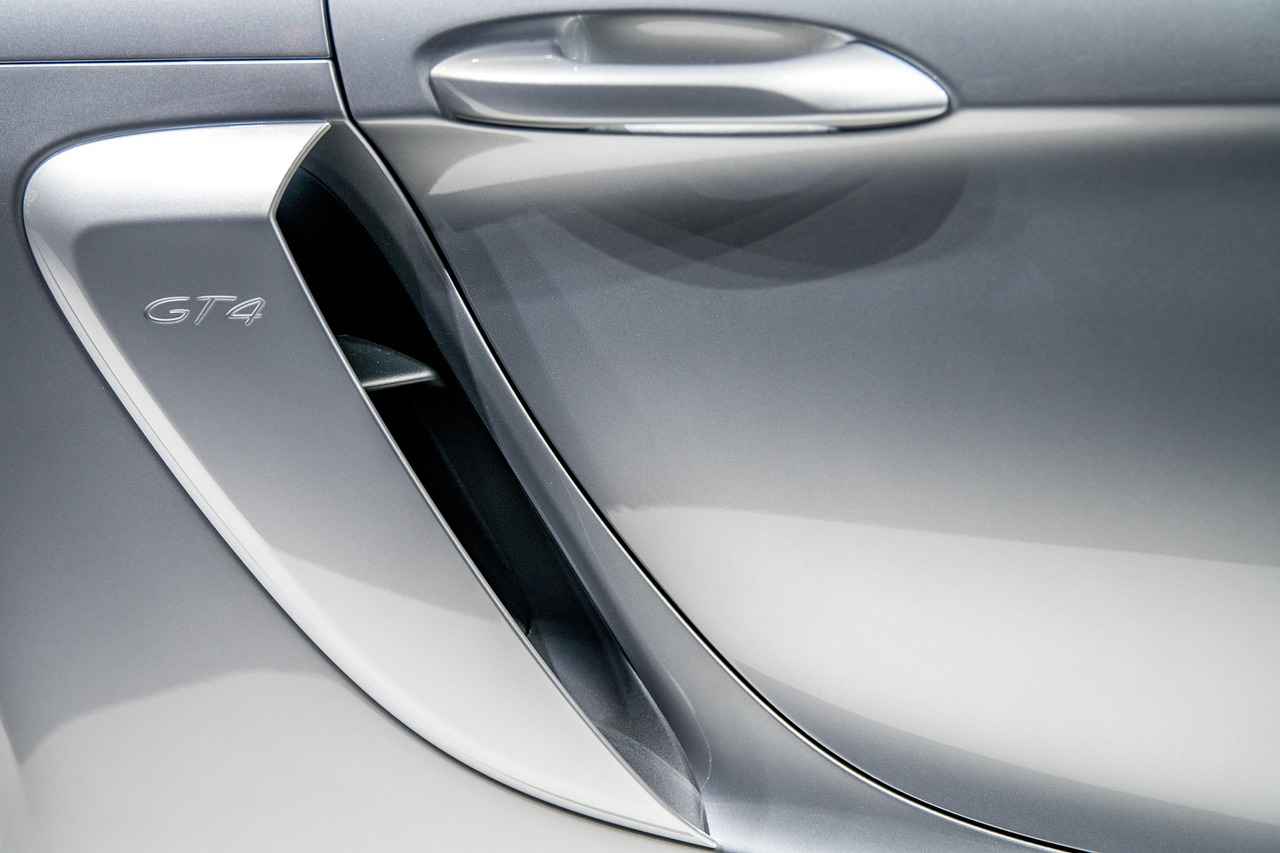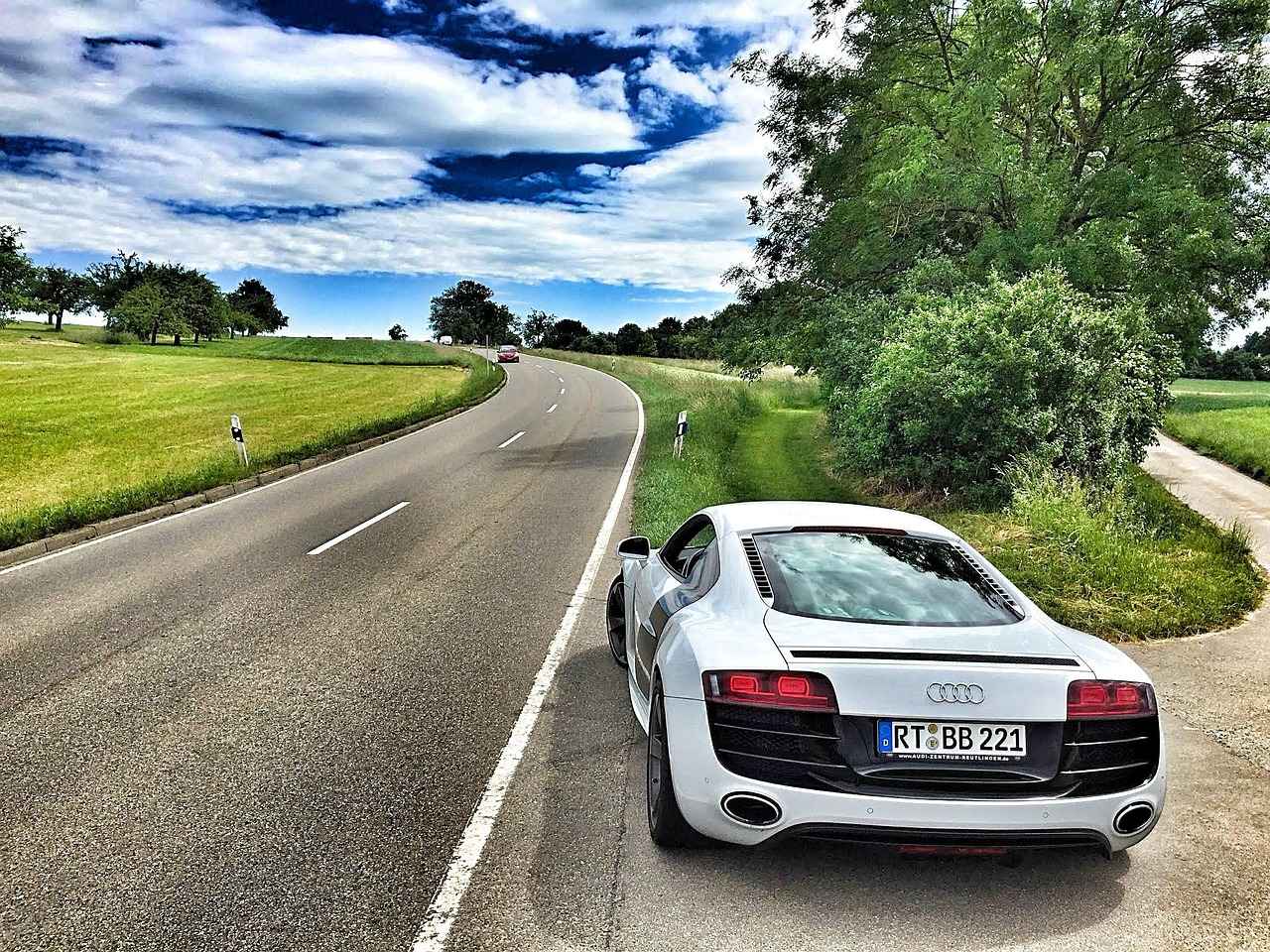Ceramic coating has gained popularity among vehicle owners as a robust solution for protecting their cars from various environmental factors. This article delves into the costs and benefits associated with ceramic coating, providing valuable insights into pricing, application methods, and the long-term advantages of this innovative protective treatment.
Ceramic coating is a liquid polymer that, when applied to the exterior of a vehicle, forms a protective layer that bonds with the paint surface. The coating is typically composed of silica dioxide (SiO2) and other compounds that create a durable shield against contaminants. This section will explore its composition and functionality in detail.
The cost of ceramic coating can vary significantly depending on several factors. On average, the price range for professional application can be anywhere from $500 to $2,000. This section will break down the average prices, influencing factors, and potential hidden costs associated with the application process.
- Vehicle Size and Type: Larger vehicles, such as SUVs and trucks, typically incur higher costs due to the increased amount of material and labor required for application.
- Quality of the Ceramic Coating Product: Different brands offer varying levels of protection and durability. High-end products may come with a higher price tag but often provide superior long-term benefits.
- Professional Labor Rates: The expertise and reputation of the detailing shop can also affect pricing. Established professionals may charge more for their services.
Choosing between a DIY approach and hiring professionals can significantly influence costs. While DIY kits are available at lower prices, they often lack the same level of durability and effectiveness as professional applications. This section discusses the pros and cons of both options to help you make an informed decision.
Ceramic coating offers numerous advantages beyond just aesthetics. This section highlights key benefits, including:
- Protection from Environmental Hazards: Ceramic coatings provide a robust barrier against UV rays, bird droppings, tree sap, and road salts, safeguarding your vehicle’s paint.
- Improved Maintenance and Cleaning: The hydrophobic properties of ceramic coatings reduce dirt accumulation, making it easier to clean your vehicle and maintain its appearance.
- Enhanced Vehicle Value: Vehicles with ceramic coatings often retain their value better over time, as the coating helps prevent damage and wear.
Understanding the longevity of ceramic coatings is crucial for potential buyers. On average, a high-quality ceramic coating can last anywhere from two to five years, depending on maintenance practices and environmental conditions. This section discusses the lifespan of various ceramic coatings and factors that can influence their durability.
To maximize the lifespan of ceramic coatings, regular maintenance is essential. Simple practices such as washing your car with pH-neutral soaps and avoiding harsh chemicals can prolong the effectiveness of the coating. This section provides practical tips for maintaining your vehicle’s ceramic coating effectively.
This section evaluates whether the benefits of ceramic coating justify the costs. Comparing ceramic coating to traditional waxing reveals significant differences in durability and protection. Additionally, customer testimonials and expert opinions can provide valuable insights into the effectiveness of ceramic coatings, helping potential buyers make an informed decision.

What is Ceramic Coating and How Does It Work?
Ceramic coating is a revolutionary product in the automotive care industry, designed to protect the exterior of vehicles. This advanced liquid polymer forms a durable protective layer that chemically bonds with the vehicle’s paint, creating a shield against various environmental elements.
The composition of ceramic coatings typically includes silica dioxide (SiO2) and other proprietary polymers. These materials work together to create a strong, hydrophobic surface that repels water and contaminants. When applied correctly, this coating can last for years, providing long-term protection and enhancing the vehicle’s appearance.
One of the key functionalities of ceramic coating is its ability to provide a barrier against harmful UV rays, which can fade paint and damage the clear coat over time. Additionally, it protects against chemical stains from bird droppings, tree sap, and other environmental pollutants that can mar the finish of a vehicle. The coating’s hydrophobic properties also make it easier to clean, as dirt and grime are less likely to adhere to the surface.
Another significant advantage of ceramic coatings is their self-cleaning properties. When it rains, the water beads up and rolls off the surface, carrying dirt and debris with it. This means that vehicles coated with ceramic can stay cleaner for longer periods, reducing the frequency of washes and the need for harsh cleaning chemicals.
In terms of application, ceramic coating can be performed by professionals or as a DIY project. However, the latter requires careful preparation and attention to detail to achieve the best results. Proper surface preparation is essential, as any imperfections can affect the bonding process and overall effectiveness of the coating.
Overall, ceramic coating represents a significant advancement in vehicle protection technology, offering numerous benefits that go beyond traditional waxes and sealants. With its long-lasting durability and superior protective qualities, it is an investment that many car owners find worthwhile.
In summary, understanding what ceramic coating is and how it works is crucial for any vehicle owner looking to enhance their car’s appearance and longevity. By forming a strong bond with the paint and providing robust protection against environmental hazards, ceramic coatings have become a popular choice for those seeking to maintain their vehicle’s aesthetic appeal.

How Much Does It Cost to Ceramic Coat a Car?
The cost of ceramic coating can vary significantly based on a multitude of factors. Understanding these factors is crucial for anyone considering this protective treatment for their vehicle. This section will detail the average prices associated with ceramic coating, the various elements that influence these costs, and any potential hidden expenses that might arise during the application process.
Several key factors can affect the overall price of ceramic coating, including:
- Vehicle Size and Type: Larger vehicles, such as SUVs and trucks, typically incur higher costs due to the increased amount of coating material required and the additional labor involved in the application process.
- Quality of the Ceramic Coating Product: The market offers a range of ceramic coating products, each with varying levels of quality and durability. Higher-end products, while more expensive, often provide superior protection and longevity.
- Professional Labor Rates: The cost of hiring a professional to apply ceramic coating can differ based on location, expertise, and the reputation of the detailing shop. It’s essential to choose a reputable provider to ensure quality application.
On average, the cost to ceramic coat a car ranges from $500 to $2,500. This wide range reflects the factors mentioned above:
- Entry-level coatings may start around $500 for smaller vehicles.
- Mid-range options typically fall between $1,000 and $1,500.
- High-end ceramic coatings can exceed $2,000, especially for larger vehicles or complex applications.
While the initial price quote may seem straightforward, several hidden costs can arise:
- Preparation Costs: Before applying ceramic coating, the vehicle’s surface must be thoroughly cleaned and prepped, which may involve additional detailing services.
- Maintenance Products: To maintain the integrity of the ceramic coating, specific maintenance products might be recommended, adding to the overall cost.
- Warranty Fees: Some high-end coatings come with warranties that may include additional fees for coverage.
Choosing between a DIY approach and hiring professionals can significantly impact costs. While DIY kits may seem more budget-friendly, the potential for improper application can lead to subpar results. Conversely, professional services, while more expensive, often guarantee a quality finish and longevity.
In conclusion, understanding the costs associated with ceramic coating is essential for making an informed decision. By considering the influencing factors, potential hidden costs, and weighing the benefits of professional application, vehicle owners can better assess whether this investment aligns with their needs and expectations.
Factors Influencing the Cost of Ceramic Coating
Ceramic coating has gained popularity among car enthusiasts and everyday drivers alike for its ability to protect vehicle surfaces while enhancing aesthetics. However, understanding the is crucial for anyone considering this investment. In this section, we will explore the primary elements that contribute to the overall pricing of ceramic coatings.
The size and type of your vehicle are significant determinants of the cost of ceramic coating. Larger vehicles, such as SUVs and trucks, typically require more coating material and labor, which can lead to increased costs. For instance, a compact car may cost less to coat than a full-sized van due to the difference in surface area. Additionally, the type of vehicle can affect the complexity of the application process; luxury cars may have more intricate designs, requiring specialized techniques that can further elevate the price.
Not all ceramic coatings are created equal. The quality of the ceramic coating product you choose can have a dramatic impact on both the price and the long-term benefits you receive. Higher-quality products often come with a higher price tag, but they also tend to offer superior protection, durability, and longevity. Investing in a reputable brand can save you money in the long run by reducing the need for frequent reapplications.
Labor costs can vary significantly based on location and the experience of the professionals performing the application. In metropolitan areas, where the cost of living is generally higher, you may find that professional labor rates for ceramic coating services are elevated. Additionally, technicians with extensive experience and specialized training may charge more for their expertise. It’s essential to balance the cost of labor with the quality of service to ensure you receive a satisfactory result.
Before applying ceramic coating, proper vehicle preparation is essential. This may include washing, decontaminating, and polishing the vehicle’s surface. These preparatory steps can add to the overall cost. Some service providers may also offer additional services, such as paint correction or interior protection, which can increase the final price. It’s advisable to inquire about these services and their associated costs when obtaining quotes.
Your geographic location can also play a role in the pricing of ceramic coating. Different regions may have varying levels of demand for ceramic coating services, which can affect pricing structures. For example, areas with a high concentration of luxury vehicles may see higher prices due to increased competition among service providers. Conversely, in regions where ceramic coating is less common, prices may be more competitive.
Many car owners consider the option of applying ceramic coating themselves to save on costs. While a DIY approach can be less expensive, it requires a significant investment of time and effort, as well as a thorough understanding of the application process. Mistakes made during application can lead to subpar results, which may necessitate professional correction later on. Therefore, weighing the potential savings against the risk of an inadequate application is crucial.
In summary, several factors significantly influence the cost of ceramic coating, including vehicle size, product quality, labor rates, preparation requirements, geographic location, and the choice between DIY or professional application. Understanding these components can help you make an informed decision and budget appropriately for this valuable vehicle enhancement.
Vehicle Size and Type
The size and type of vehicle play a crucial role in determining the cost of ceramic coating. Understanding these factors can help vehicle owners make informed decisions about protecting their investments.
When it comes to ceramic coating, larger vehicles, such as SUVs and trucks, generally incur higher costs compared to smaller cars. This is primarily because larger vehicles require a greater amount of ceramic coating material. The application process is also more labor-intensive, as technicians need to cover a larger surface area, which increases both the time and effort involved in the job.
For instance, a standard sedan might require 1 to 2 liters of ceramic coating, while an SUV could require 3 to 5 liters or more. This difference in material usage directly correlates to the overall cost. Additionally, the complexity of the vehicle’s design can also influence the price. Vehicles with intricate curves or multiple surfaces may take longer to coat, further escalating labor costs.
Moreover, the type of vehicle can significantly impact the ceramic coating cost. Luxury vehicles often come with more expensive paint finishes that necessitate specialized care during the coating process. These vehicles may also require higher-quality ceramic coatings to match their premium aesthetics and protect their value. As a result, the costs can vary widely based on the vehicle’s brand, model, and paint type.
Another factor to consider is the condition of the vehicle’s paint before the ceramic coating application. Vehicles with pre-existing scratches, swirls, or other imperfections may require additional paint correction services prior to coating. This can add to the overall expense, making it essential for vehicle owners to assess their vehicle’s condition beforehand.
To provide a clearer understanding, here’s a breakdown of potential costs based on vehicle size and type:
| Vehicle Type | Estimated Cost Range |
|---|---|
| Compact Car | $500 – $1,000 |
| Midsize Sedan | $700 – $1,500 |
| SUV | $1,000 – $2,000 |
| Luxury Vehicle | $1,500 – $3,000+ |
In summary, when considering ceramic coating for your vehicle, it is vital to factor in the size and type of your vehicle. Larger and more complex vehicles will typically incur higher costs due to the increased amount of material and labor required. Additionally, luxury vehicles may demand higher-quality coatings, which can further elevate the price. By understanding these variables, vehicle owners can better navigate their options and make informed decisions regarding ceramic coating investments.
Quality of the Ceramic Coating Product
When it comes to protecting your vehicle, the plays a crucial role in determining the level of protection and durability it offers. Not all ceramic coatings are created equal; they vary significantly in terms of formulation, performance, and longevity. Understanding these differences can help you make an informed decision when selecting a coating for your car.
Higher-end ceramic coatings are often formulated with advanced silica or silicon dioxide (SiO2) content, which enhances their protective capabilities. These premium products typically provide superior resistance to scratches, UV rays, chemical stains, and environmental contaminants. In contrast, lower-quality coatings may lack these essential characteristics, leading to diminished performance over time.
Why Invest in High-Quality Ceramic Coatings?
- Enhanced Protection: High-quality coatings offer a robust shield against harsh environmental elements, ensuring your vehicle’s paint remains intact.
- Longer Lifespan: Premium products often come with warranties ranging from 2 to 10 years, reflecting their durability and effectiveness.
- Better Hydrophobic Properties: Higher-quality coatings repel water more effectively, making it easier to clean and maintain your vehicle.
- Improved Gloss and Shine: Premium coatings enhance the visual appeal of your vehicle, providing a deep, glossy finish that lasts.
While higher-quality ceramic coatings may come with a premium price tag, the long-term benefits often outweigh the initial investment. For instance, a higher-priced coating can reduce the frequency and cost of detailing, as its protective properties minimize the accumulation of dirt and grime. Additionally, the enhanced durability can help maintain your vehicle’s resale value, making it a wise choice for car enthusiasts and everyday drivers alike.
Are All Ceramic Coatings Worth the Investment?
It’s essential to consider that not every ceramic coating is suitable for every vehicle or owner. Factors such as driving habits, environmental conditions, and personal preferences will influence the effectiveness of a ceramic coating. For example, if you frequently park your car outdoors or live in an area with harsh weather conditions, investing in a top-tier product may be more beneficial.
Moreover, the application process can also affect the performance of the coating. Professional installation is often recommended for high-quality products, as experienced technicians can ensure proper bonding and coverage. DIY kits may be more affordable, but they often require meticulous preparation and application to achieve optimal results.
In summary, the significantly impacts its performance and longevity. Investing in a high-quality coating can provide superior protection, ease of maintenance, and long-term benefits that justify the initial cost. By understanding the differences between various brands and formulations, you can make a more informed decision that aligns with your vehicle’s needs and your budget.
DIY vs. Professional Application
When it comes to ceramic coating your vehicle, one of the most significant decisions you’ll face is whether to take a DIY approach or to hire professionals. This choice can dramatically influence the overall costs and the quality of the outcome. In this section, we will explore the pros and cons of both options to help you make an informed decision.
Taking the DIY route can be appealing, especially for those who enjoy hands-on projects and want to save money. However, it’s essential to weigh the benefits against the potential drawbacks.
- Pros:
- Cost Savings: One of the most significant advantages of DIY is the potential to save on labor costs, which can be substantial when hiring professionals.
- Control: You have complete control over the application process, allowing you to work at your own pace and ensure that every detail meets your standards.
- Learning Experience: Engaging in the DIY process can be educational, giving you insights into car care and maintenance.
- Cons:
- Time-Consuming: DIY applications can take significantly longer than professional installations, especially if you’re inexperienced.
- Quality Risks: Without proper training, the application may not bond correctly, leading to subpar results and requiring reapplication sooner than expected.
- Equipment Costs: While you save on labor, you still need to invest in high-quality materials and tools, which can add up.
On the other hand, hiring professionals comes with its own set of advantages and disadvantages.
- Pros:
- Expertise: Professionals have the experience and training to ensure a flawless application, maximizing the coating’s effectiveness.
- Time Efficiency: A professional team can typically complete the job much faster than a DIY effort, allowing you to enjoy your newly coated vehicle sooner.
- Warranty: Many professional services offer warranties on their work, providing peace of mind in case of issues down the line.
- Cons:
- Higher Costs: The most apparent downside is the increased expense associated with professional services, which can be a significant factor for budget-conscious individuals.
- Less Control: You may have less control over the process, as you must trust the professionals to handle the application.
- Scheduling: Finding a suitable time for a professional application might require flexibility in your schedule.
Ultimately, the decision between a DIY approach and hiring professionals hinges on your budget, comfort level with car care, and the desired outcome. If you prioritize cost savings and enjoy hands-on projects, a DIY approach might be suitable. However, if you seek quality assurance and efficiency, hiring professionals could be the better choice.

What Are the Benefits of Ceramic Coating?
Ceramic coating offers a multitude of benefits that extend far beyond mere aesthetics. This advanced protective solution has gained popularity among car enthusiasts and everyday drivers alike for its impressive features. In this section, we will explore the key advantages of ceramic coating, including its protective qualities, ease of maintenance, and the potential for enhancing your vehicle’s value.
- Protection from Environmental Hazards: One of the most significant advantages of ceramic coating is its ability to provide a robust barrier against various environmental threats. UV rays, acid rain, bird droppings, and road salts can cause serious damage to your vehicle’s paint over time. Ceramic coatings are designed to resist these elements, effectively protecting the underlying paint and preserving the vehicle’s appearance.
- Ease of Maintenance: Keeping your vehicle clean can often feel like a daunting task. However, ceramic coatings simplify this process significantly. Thanks to their hydrophobic properties, these coatings repel water and dirt, making it easier to wash your car. When dirt and grime do not adhere to the surface, you can spend less time cleaning and more time enjoying your vehicle.
- Enhanced Vehicle Value: Investing in ceramic coating can also be seen as a smart financial decision. By protecting your car’s paint and maintaining its appearance, you can potentially increase its resale value. A well-maintained vehicle with a pristine exterior is more appealing to potential buyers, which can lead to higher offers when it comes time to sell.
- Long-Lasting Results: Unlike traditional waxes and sealants that may need to be reapplied frequently, ceramic coatings offer long-lasting protection. Depending on the product used and the application process, a high-quality ceramic coating can last for several years, providing peace of mind and ongoing protection for your investment.
- Resistance to Chemicals: Ceramic coatings are also resistant to various chemicals that can harm your vehicle’s finish. From cleaning agents to bird droppings, these coatings can withstand exposure to corrosive substances without degrading. This feature further enhances their protective capabilities and ensures your vehicle remains in top condition.
In summary, the benefits of ceramic coating extend beyond just improving your vehicle’s appearance. With its protective qualities, ease of maintenance, and potential to enhance resale value, ceramic coating is a worthwhile investment for any car owner. By choosing this advanced protective solution, you can enjoy a cleaner, more aesthetically pleasing vehicle while safeguarding it against the elements.
Protection from Environmental Hazards
Ceramic coatings are increasingly popular among vehicle owners due to their ability to provide a robust barrier against various environmental contaminants. These coatings are designed to protect your vehicle’s exterior from damaging elements that can lead to deterioration and unsightly blemishes. Understanding how ceramic coatings safeguard your vehicle is crucial for any car owner looking to maintain their vehicle’s appearance and longevity.
What Environmental Hazards Can Ceramic Coatings Protect Against?
- UV Rays: Prolonged exposure to ultraviolet rays can cause paint to fade and degrade over time. Ceramic coatings offer UV protection, helping to maintain the vibrancy of your vehicle’s color.
- Bird Droppings: The acidic nature of bird droppings can etch into the paint if left untreated. A ceramic coating forms a protective layer that makes it easier to clean off such contaminants without damaging the underlying paint.
- Road Salts: In colder climates, road salts are commonly used to de-ice roads. These salts can corrode metal surfaces and damage paintwork. Ceramic coatings create a protective shield that helps resist the corrosive effects of road salts.
- Tree Sap: Tree sap can be incredibly sticky and challenging to remove. Ceramic coatings provide a surface that repels sap, making it easier to wipe away without leaving residue.
How Does Ceramic Coating Work?
The technology behind ceramic coatings involves a liquid polymer that chemically bonds with your vehicle’s paint. Once applied, this coating creates a strong, hydrophobic layer that repels water, dirt, and other contaminants. The hydrophobic properties of ceramic coatings mean that water beads up and rolls off the surface, taking dirt and grime with it. This not only makes your car easier to clean but also reduces the frequency of washing, which can be beneficial for the environment.
Long-Term Benefits of Protection
Investing in ceramic coating not only protects your vehicle from immediate environmental hazards but also offers long-term benefits. By maintaining the integrity of the paint and reducing the likelihood of scratches and chips, ceramic coatings can help preserve your vehicle’s resale value. A well-maintained exterior can significantly enhance the appeal of your car to potential buyers.
In Summary
Ceramic coatings are an excellent investment for vehicle owners who want to protect their cars from various environmental hazards. With their ability to shield against UV rays, bird droppings, road salts, and more, these coatings provide both immediate and long-lasting benefits. By understanding how ceramic coatings work and the protection they offer, vehicle owners can make informed decisions about maintaining their cars.
Improved Maintenance and Cleaning
One of the most notable advantages of ceramic coating is its remarkable ease of cleaning. This innovative treatment not only enhances the vehicle’s appearance but also significantly simplifies maintenance routines, making it a popular choice among car enthusiasts and everyday drivers alike.
The hydrophobic properties of ceramic coatings are key to their effectiveness. When applied to a vehicle’s surface, these coatings create a protective layer that repels water and dirt. As a result, contaminants are less likely to adhere to the paint, leading to a cleaner vehicle with minimal effort. This unique feature means that when it rains, water beads up and rolls off the surface, taking dirt and grime with it.
In addition to repelling water, ceramic coatings also provide a barrier against various environmental pollutants. Bird droppings, tree sap, and road grime can be particularly damaging to a car’s paint if left untreated. However, with a ceramic coating, these substances are less likely to bond with the surface, allowing for easier removal during routine washes.
- Time Saving: With ceramic coating, car owners can spend less time cleaning their vehicles and more time enjoying them. Traditional waxes and sealants require frequent reapplication and extensive labor, while ceramic coatings can last for years with the right maintenance.
- Reduced Need for Harsh Chemicals: The protective layer offered by ceramic coatings means that less aggressive cleaning products are needed. This not only benefits the car’s surface but also reduces environmental impact, making it a more sustainable option.
- Enhanced Shine: The glossy finish of ceramic coatings not only looks stunning but also enhances the vehicle’s overall aesthetic appeal. This shine is maintained over time, requiring less frequent polishing.
Moreover, the self-cleaning effect of ceramic coatings is particularly advantageous for those living in areas with harsh weather conditions. Snow, rain, and mud can quickly dirty a vehicle, but with a ceramic coating, these elements are less likely to cling to the surface, making it easier to maintain a pristine appearance.
For those who prefer to wash their cars at home, the application of ceramic coating can be a game-changer. A simple rinse with water can often suffice to remove light dirt and grime, while more stubborn contaminants can be wiped away with minimal effort. This ease of cleaning can make regular maintenance less of a chore and more of a quick and enjoyable task.
In summary, the hydrophobic properties of ceramic coatings not only reduce dirt accumulation but also simplify maintenance routines, allowing car owners to enjoy a cleaner and more visually appealing vehicle with less effort. This feature, combined with the long-term benefits of protection and durability, makes ceramic coating a worthwhile investment for anyone looking to preserve their vehicle’s aesthetics and value.

How Long Does Ceramic Coating Last?
Understanding the longevity of ceramic coatings is crucial for potential buyers. The lifespan of ceramic coatings can vary significantly based on several factors, including the quality of the product, application method, and environmental conditions. In this section, we will delve into the expected lifespan of various ceramic coatings and the elements that can influence their durability.
On average, high-quality ceramic coatings can last anywhere from 2 to 5 years or more, depending on the specific product and its application. Some premium coatings even claim a lifespan of up to 7 years or longer. However, it is essential to note that these estimates can fluctuate based on the following factors:
- Quality of the Coating: Higher-quality ceramic coatings often contain advanced formulations that enhance durability and resistance to wear and tear.
- Application Method: Professional application usually results in better bonding and coverage compared to DIY methods, significantly affecting longevity.
- Environmental Conditions: Vehicles exposed to harsh weather, UV rays, and pollutants may experience a shorter lifespan for their coatings.
- Maintenance Practices: Regular washing and proper care can extend the life of the coating, while neglect can lead to premature degradation.
To maximize the lifespan of ceramic coatings, regular maintenance is essential. Here are some practical tips:
- Wash Regularly: Use a pH-neutral car shampoo to avoid damaging the coating. Regular washing helps prevent the buildup of contaminants.
- Avoid Automatic Car Washes: Some car washes use harsh chemicals and brushes that can wear down the coating.
- Use a Soft Microfiber Towel: When drying your vehicle, opt for a soft microfiber towel to prevent scratches.
- Apply a Maintenance Spray: Some brands offer maintenance sprays designed to enhance the coating’s hydrophobic properties.
Yes, there are various types of ceramic coatings available on the market, each with unique properties and lifespans. Here’s a brief overview:
| Type of Coating | Expected Lifespan | Key Features |
|---|---|---|
| Entry-Level Coatings | 1-2 years | Affordable, basic protection, suitable for DIY. |
| Mid-Range Coatings | 2-4 years | Better durability, professional application recommended. |
| Premium Coatings | 5-7 years | Superior protection, resistant to chemicals and UV rays. |
In conclusion, understanding the longevity of ceramic coatings is vital for anyone considering this protective treatment for their vehicle. By being aware of the factors that influence durability, potential buyers can make informed decisions and take appropriate steps to maintain their investment effectively.
Factors Affecting the Longevity of Ceramic Coatings
Ceramic coatings have gained immense popularity in the automotive world due to their ability to protect a vehicle’s paint and enhance its appearance. However, understanding how long these coatings last is crucial for car owners considering this investment. Several elements can determine the longevity of a ceramic coating, including maintenance practices and environmental conditions. Here, we explore these influencing factors in detail.
The lifespan of ceramic coatings can vary significantly based on multiple factors:
- Maintenance Practices: Regular maintenance is vital for extending the life of ceramic coatings. Neglecting routine upkeep can lead to a decrease in effectiveness.
- Environmental Conditions: Factors such as climate, exposure to UV rays, and pollution levels can impact the durability of the coating.
- Application Quality: The skill of the professional applying the coating plays a crucial role. A poorly applied coating may not bond correctly, resulting in premature failure.
- Type of Coating: Different brands and formulations offer varying levels of protection and longevity. Higher-quality products often last longer.
Proper maintenance can significantly enhance the lifespan of ceramic coatings. Here are some essential practices:
- Regular Washing: Frequent washing using pH-neutral soaps helps remove contaminants that can degrade the coating.
- Use of Maintenance Products: Utilizing specific maintenance sprays designed for ceramic coatings can help rejuvenate the surface and maintain its hydrophobic properties.
- Avoiding Harsh Chemicals: Steer clear of abrasive cleaners and harsh chemicals that can strip the coating.
The environment in which a vehicle is parked and driven can have a substantial impact on the longevity of ceramic coatings:
- UV Exposure: Prolonged exposure to sunlight can degrade the coating over time. Parking in shaded areas or using car covers can help mitigate this effect.
- Climate Conditions: Extreme weather conditions, such as heavy rain or snow, can also affect the coating. Regularly inspecting the vehicle can help identify any issues early.
- Pollution and Contaminants: Urban environments with high pollution levels can lead to faster degradation of the coating. Regular washing is essential in such areas.
The quality of the application process is critical. A professional applicator ensures:
- Proper Surface Preparation: Thorough cleaning and decontamination of the vehicle’s surface are essential for optimal bonding.
- Correct Application Techniques: Professionals are trained to apply coatings uniformly and at the right thickness, maximizing durability.
Not all ceramic coatings are created equal. When selecting a product, consider:
- Brand Reputation: Research reputable brands known for their quality and longevity.
- Product Specifications: Look for coatings that offer warranties or guarantees, as these often indicate confidence in the product’s durability.
In summary, the longevity of ceramic coatings is influenced by a combination of maintenance practices, environmental conditions, application quality, and the type of product used. By understanding and managing these factors, vehicle owners can ensure their ceramic coatings provide long-lasting protection and aesthetic appeal.
Regular Maintenance for Optimal Longevity
Maintaining the integrity of your vehicle’s ceramic coating is crucial for ensuring its longevity and effectiveness. Regular maintenance not only enhances the protective qualities of the coating but also keeps your vehicle looking pristine. Below are some practical tips to help you maintain your ceramic coating effectively.
- Regular Washing: Wash your vehicle regularly using a pH-neutral car shampoo. This helps remove dirt and contaminants that can bond with the coating. Avoid using harsh chemicals that can degrade the coating.
- Use Soft Cloths: When drying your vehicle, opt for a soft microfiber towel. This prevents scratches and preserves the coating’s integrity.
- Avoid Automatic Car Washes: Automatic car washes can be abrasive and may damage the ceramic coating. Instead, consider hand washing your vehicle to ensure a gentle clean.
- Apply a Maintenance Spray: Many ceramic coatings come with maintenance sprays that enhance the hydrophobic properties and add an extra layer of protection. Use these sprays periodically to maintain the coating’s effectiveness.
- Inspect for Damage: Regularly inspect your vehicle for any signs of damage or wear on the coating. If you notice any issues, address them promptly to prevent further deterioration.
- Keep it Covered: Whenever possible, park your vehicle in a garage or use a car cover. This protects it from environmental elements such as UV rays, bird droppings, and tree sap that can harm the coating.
Additionally, understanding the environmental factors that can affect your ceramic coating is essential. For instance, areas with high levels of pollution or extreme weather conditions can lead to quicker degradation of the coating. Therefore, adapting your maintenance routine based on your local environment is advisable.
Furthermore, consider scheduling professional maintenance at least once a year. Professionals can perform thorough inspections and reapply coatings if necessary, ensuring that your vehicle remains protected over time.
By following these maintenance tips, you can significantly extend the lifespan of your ceramic coating and enjoy the numerous benefits it offers. Regular care not only enhances the appearance of your vehicle but also preserves its value, making it a wise investment in the long run.

Is Ceramic Coating Worth the Investment?
When considering whether ceramic coating is a worthwhile investment for your vehicle, it’s essential to evaluate both the benefits and the costs associated with this protective treatment. Many car owners are drawn to ceramic coatings due to their promise of enhanced durability and protection. However, the question remains: do the advantages truly justify the price?
To start, let’s explore the benefits of ceramic coating. One of the most significant advantages is its ability to provide a robust barrier against environmental hazards. Ceramic coatings are designed to protect your vehicle’s paint from damaging elements like UV rays, acid rain, and road salts. This protective layer can help maintain the vehicle’s appearance for a longer period, reducing the need for frequent repainting or touch-ups.
Moreover, ceramic coatings offer remarkable ease of maintenance. The hydrophobic properties of the coating mean that water beads off the surface, which in turn minimizes dirt accumulation. As a result, washing your car becomes a quicker and easier task, allowing you to spend less time on upkeep and more time enjoying your vehicle.
Now, let’s address the costs. The price of applying a ceramic coating can vary significantly based on several factors, including the size of your vehicle and the quality of the coating product. Professional application can range from a few hundred to several thousand dollars, depending on these variables. While this may seem steep, it’s crucial to consider the long-term savings that come from reduced maintenance and potential increases in resale value.
Another perspective to consider is the comparison between ceramic coating and traditional waxing. While waxing can provide a temporary shine and some protection, it typically lasts only a few months, requiring regular reapplication. In contrast, a high-quality ceramic coating can last for several years, making it a more cost-effective solution in the long run.
Additionally, customer testimonials and expert opinions play a vital role in determining the value of ceramic coatings. Many users report significant satisfaction with the durability and appearance of their vehicles post-application. Industry experts often highlight the transformative effects of ceramic coatings, emphasizing their ability to maintain a vehicle’s aesthetic appeal over time.
In conclusion, whether ceramic coating is worth the investment largely depends on your individual needs and circumstances. If you prioritize long-term protection, ease of maintenance, and enhanced vehicle value, the benefits may indeed outweigh the costs. However, it’s essential to conduct thorough research and consider your specific situation before making a decision.
Comparing Ceramic Coating to Traditional Waxing
When it comes to protecting your vehicle’s exterior, ceramic coating and traditional waxing are two popular options. However, a closer examination reveals that these methods differ significantly in terms of durability, protection, and long-term value. Understanding these differences can help potential buyers make informed decisions about which protective treatment is best for their vehicles.
Ceramic coating is a liquid polymer that forms a chemical bond with your vehicle’s paint, creating a durable layer of protection. This advanced technology provides superior resistance to environmental contaminants, UV rays, and scratches, making it a preferred choice for many car enthusiasts.
Traditional waxing, on the other hand, involves applying a wax product to the vehicle’s surface. While it provides a temporary shine and some level of protection, it typically lasts only a few weeks to a couple of months, depending on environmental conditions and maintenance.
- Ceramic Coating: Can last anywhere from 2 to 5 years or more with proper maintenance.
- Waxing: Requires frequent reapplication, often every month or two.
Ceramic coatings offer a robust barrier against environmental contaminants such as bird droppings, tree sap, and road salts. These substances can damage your vehicle’s paint if not removed promptly. In contrast, traditional wax does not provide the same level of protection and can be easily stripped away by harsh weather conditions.
Another significant advantage of ceramic coatings is their hydrophobic properties, which repel water and dirt. This means that your vehicle will stay cleaner for longer, and washing it becomes much easier. Waxed surfaces, however, tend to attract dirt and grime, requiring more frequent cleaning.
While the initial cost of ceramic coating may be higher than waxing, it’s essential to consider the long-term savings. Since ceramic coatings last much longer and require less maintenance, they can be more cost-effective over time. In contrast, the ongoing costs of reapplying wax can add up significantly.
Ultimately, the choice between ceramic coating and traditional waxing depends on your individual needs and preferences. If you’re looking for a long-lasting solution that offers superior protection and ease of maintenance, ceramic coating is the way to go. For those who prefer a more traditional approach and are willing to invest time in regular upkeep, waxing may still be a viable option. Understanding these differences can empower you to make the best decision for your vehicle’s care.
Customer Testimonials and Expert Opinions
When considering the investment in ceramic coating for your vehicle, it is essential to gather insights from those who have experienced its benefits firsthand. Customer testimonials and expert opinions provide a wealth of information that can help potential buyers make informed decisions. This section compiles various perspectives, highlighting the effectiveness and advantages of ceramic coatings.
Many customers rave about the transformative effects of ceramic coatings on their vehicles. For instance, John D., a proud owner of a luxury car, shared, “After applying ceramic coating, my car looks brand new even after months of exposure to the elements. The shine is incredible, and I hardly have to wash it!” Such testimonials emphasize the long-lasting shine and protection ceramic coatings offer.
Another common theme in customer feedback is the impact of ceramic coatings on vehicle resale value. Sarah M., a car enthusiast, noted, “Investing in ceramic coating was one of the best decisions I made for my car’s resale value. It not only looks great, but it also protects the paint from fading.” This sentiment is echoed by many who view ceramic coatings as a wise investment that pays off when selling or trading in their vehicles.
Industry experts also weigh in on the effectiveness of ceramic coatings. Automotive detailer Mike T. explains, “Ceramic coatings provide a level of protection that traditional wax simply cannot match. They create a strong bond with the paint, resisting scratches and environmental damage.” Experts highlight the advanced technology behind ceramic coatings, which enhances their durability and effectiveness compared to conventional methods.
Experts emphasize that the benefits of ceramic coatings extend beyond aesthetics. According to automotive specialist Dr. Emily R., “These coatings act as a shield against UV rays, bird droppings, and other contaminants. This not only keeps the vehicle looking pristine but also prevents long-term damage.” Such insights underline the protective qualities of ceramic coatings, reinforcing their value as a protective investment.
While the majority of customer feedback is positive, some users have reported challenges. For example, Tom L. expressed, “I had high expectations, but the coating started to wear off after a year. I wish I had done more research on the product quality.” This highlights the importance of selecting a reputable brand and professional application to ensure optimal results.
Expert opinions carry weight due to their knowledge and experience in the automotive industry. They provide unbiased assessments based on extensive testing and customer feedback. Automotive journalist Lisa K. states, “Choosing the right ceramic coating can make all the difference in your satisfaction. Always consult with professionals to find a product that suits your needs.” This advice is invaluable for potential buyers navigating the myriad of options available.
In conclusion, gathering insights from both customers and experts can significantly influence your decision regarding ceramic coating. Their shared experiences and expert evaluations highlight the protective benefits, aesthetic enhancements, and potential challenges associated with this investment. By considering these perspectives, you can make a more informed choice that aligns with your vehicle maintenance goals.
Frequently Asked Questions
- What is ceramic coating?
Ceramic coating is a liquid polymer that bonds with your vehicle’s paint, creating a protective layer. It shields against environmental hazards and enhances the car’s appearance.
- How much does it cost to ceramic coat a car?
The cost can vary widely, typically ranging from $500 to $2,000. Factors like vehicle size, coating quality, and labor rates all influence the final price.
- Can I apply ceramic coating myself?
Yes, you can opt for a DIY approach, but professional application often yields better results. Consider your skill level and the product quality before deciding.
- How long does ceramic coating last?
Ceramic coatings can last anywhere from 2 to 5 years, depending on the product and how well you maintain it. Regular upkeep is key to maximizing its lifespan.
- Is ceramic coating worth the investment?
Absolutely! While the initial cost may seem high, the long-term benefits—like reduced maintenance and enhanced protection—make it a smart choice for many car owners.
- How does ceramic coating compare to traditional waxing?
Ceramic coating offers superior durability and protection compared to traditional wax, which typically lasts only a few months. The investment in ceramic coating pays off in the long run.




